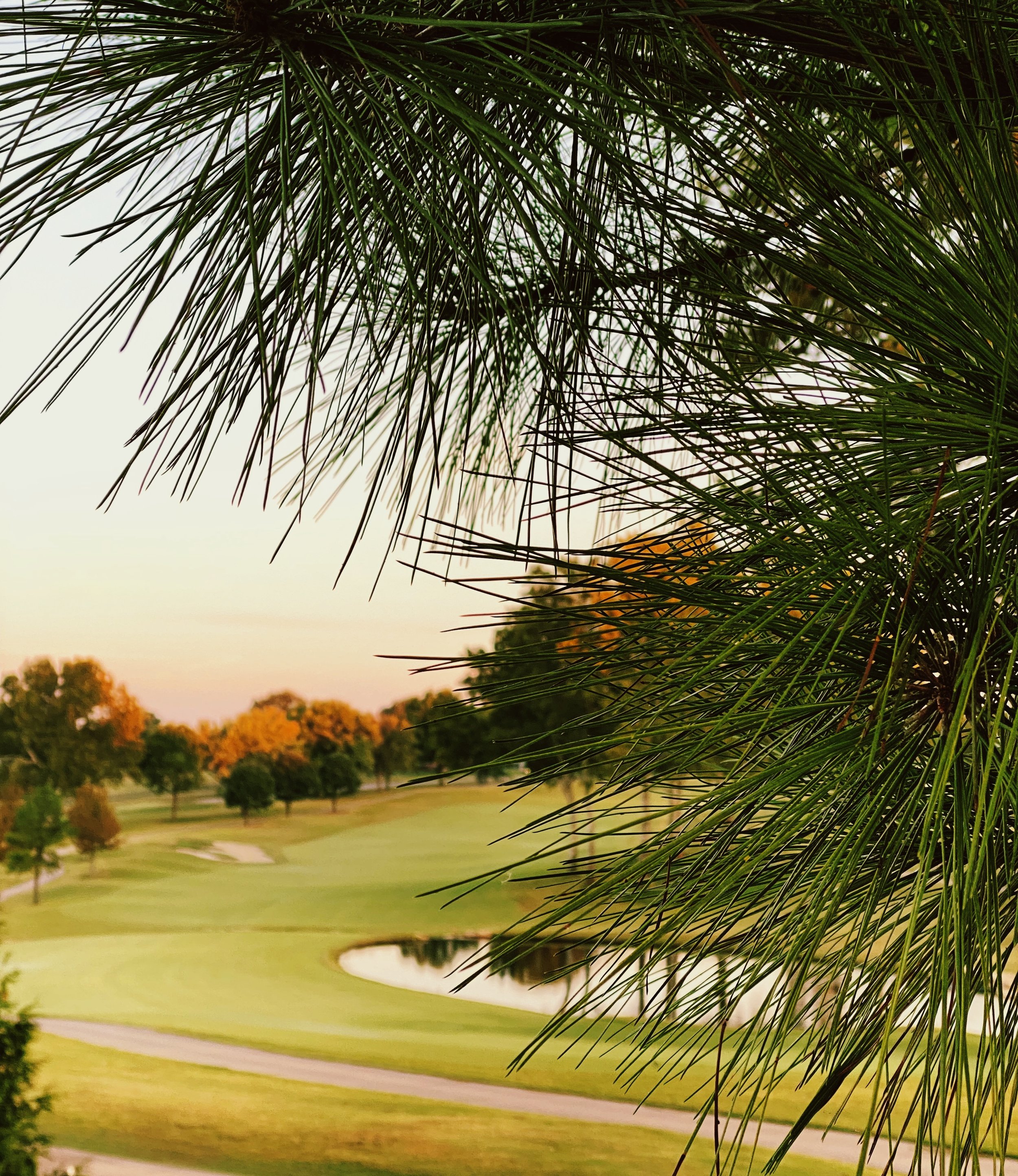Pinnell’s Playground
It’s a warm, clear early Autumn evening. Matt Pinnell is working his way through a throng of guests during a luau-themed celebration in his honor on Monkey Island.
If you were dropped into the middle of this scene, it might be a shock to your senses. This isn’t an island (it’s a peninsula), there are no monkeys (at least none that I saw) and we’re not on Maui. That doesn’t matter. No one here on this night would prefer the sandy beaches of Hawaii over this time and this place – especially Pinnell.
He’s in his element. Donning a brightly colored shirt and a lei around his neck, Pinnell works the crowd masterfully. There aren’t many in the room he doesn’t know by name, and by the end of the night he’ll work that number down to zero.
It’s a lively group here this evening. We’re at The Anchor Sports Bar at Shangri-La Resort and Golf Club. I’ve been up here once or twice before as a kid, but this is NOT what I remember. What was once a location considered an afterthought by many Oklahomans, Checotah native Eddy Gibbs – a self-proclaimed fence builder – has invested millions into revitalizing this resort over the last 10 years (I should’ve gotten into the fence business).
Inside by the bar, many attendees are catching an early-season football game on one of the many vibrant televisions. Out on the patio, the sun is setting and the buffet line is growing. Gibbs calls this part of the resort “The Activity Park.” There’s an arcade, golf simulators, basketball courts, cornhole pits and even a wiffleball field designed to look like a miniature Fenway Park.
Tonight, it’s a party. Tomorrow, we hit the golf course.
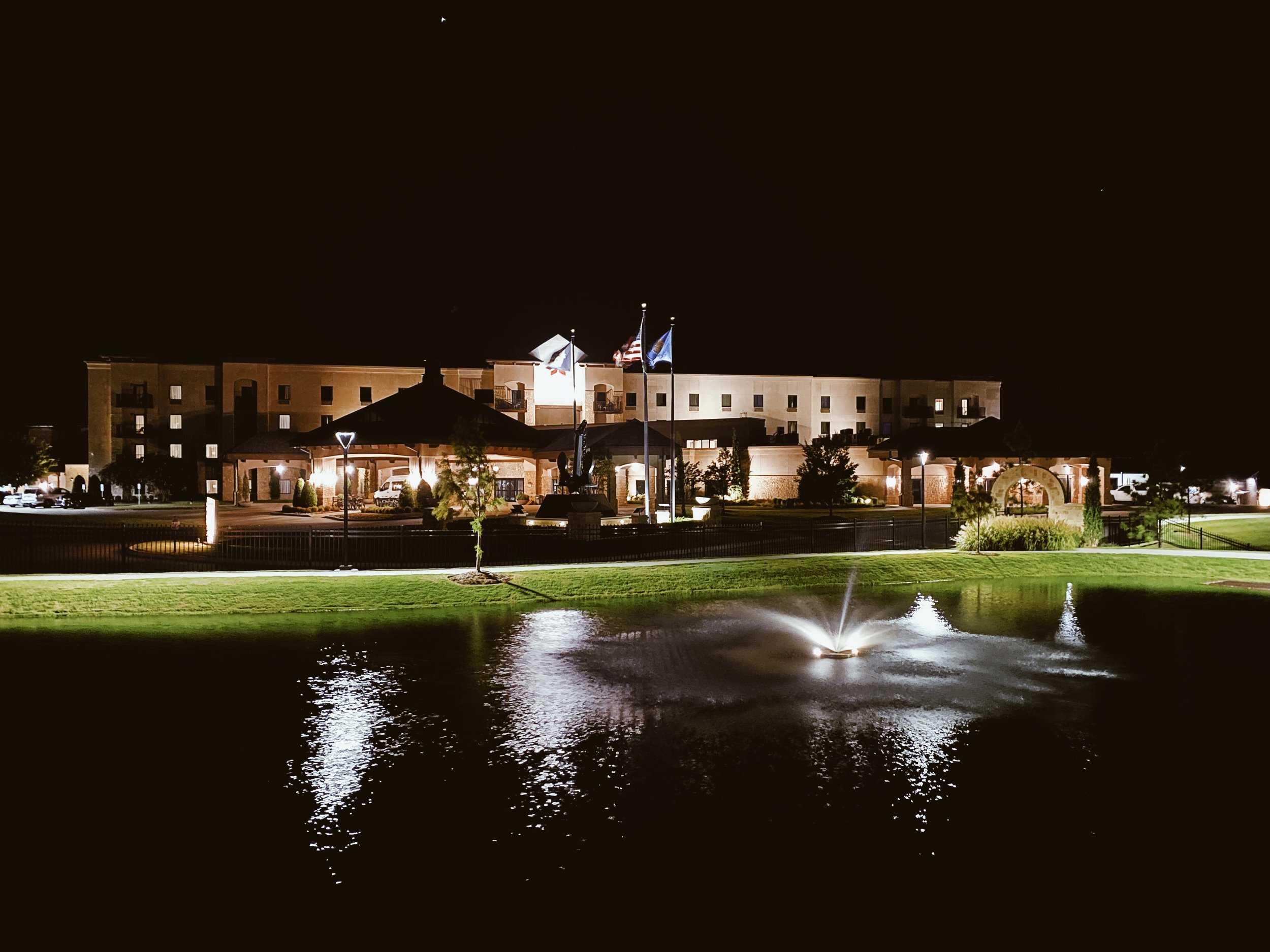
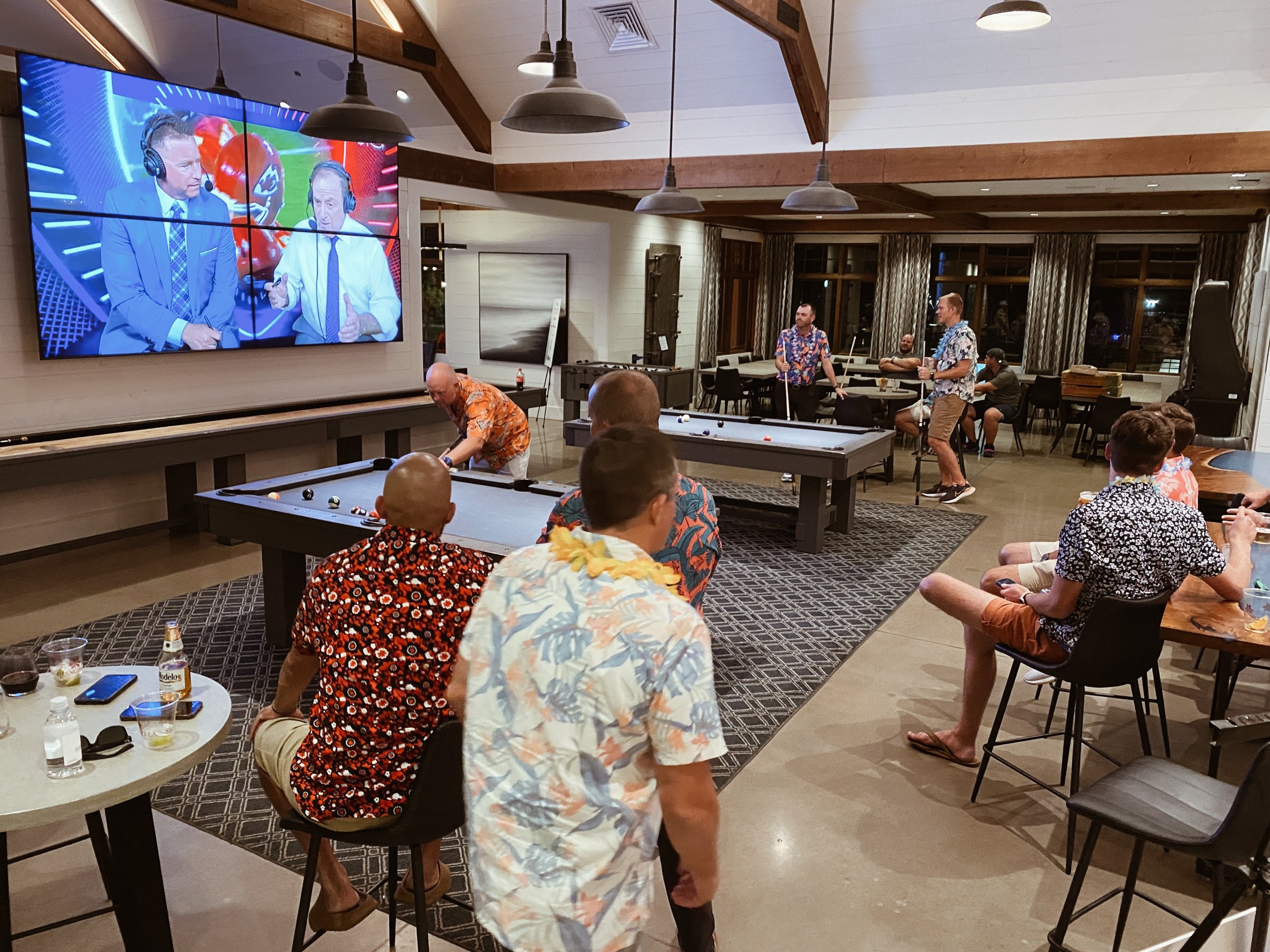
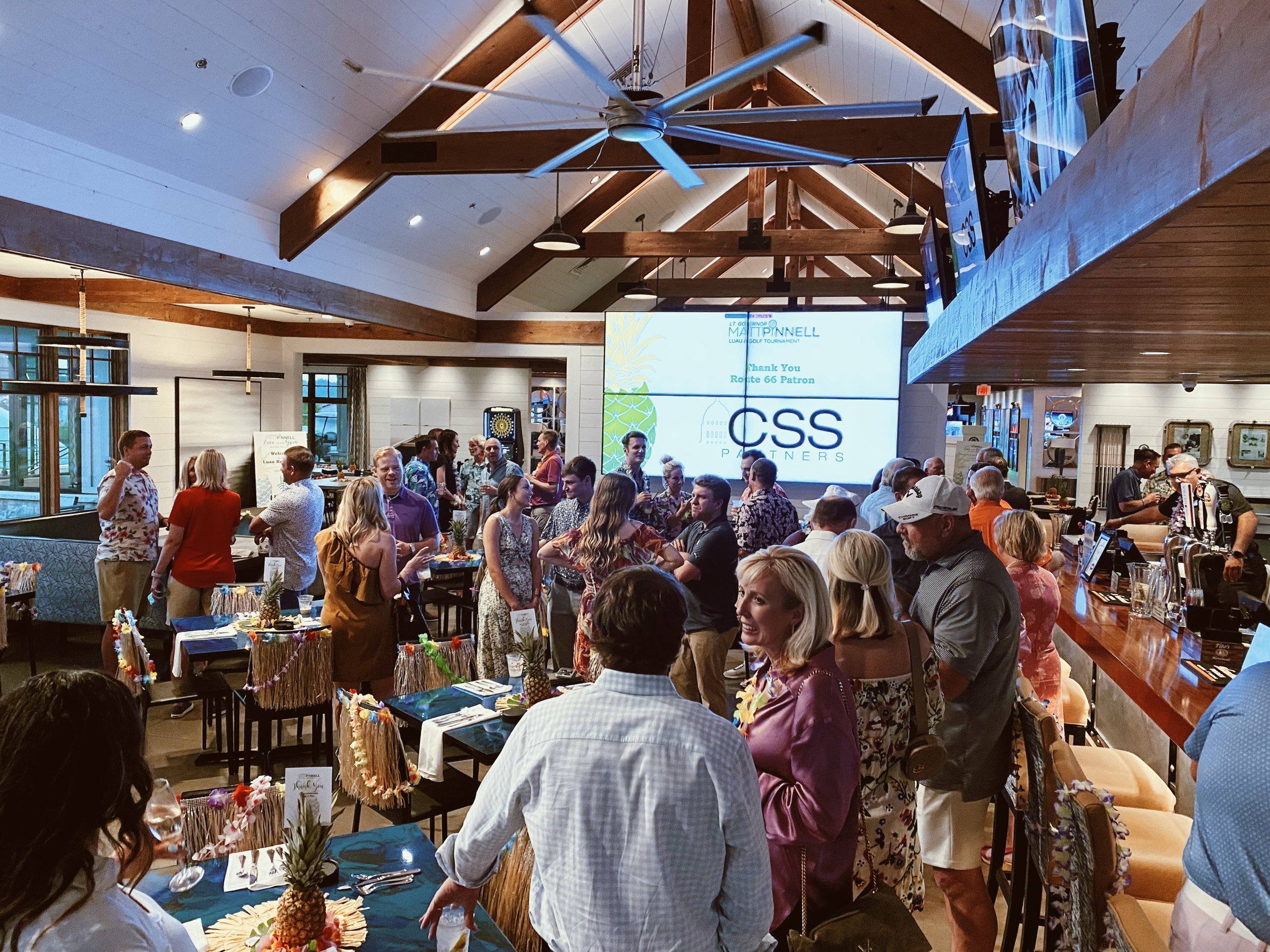
It’s a crisp morning on the island. The sun hasn’t broken the horizon when the first golfers start to trickle into Shangri-La’s grand clubhouse. There’s a pan of breakfast burritos and a carafe of steaming hot coffee. One-by-one, participants sign in, grab a gift bag, load up on breakfast and head out to the range. It’ll be a full day of golf on a historic track along the banks of Grand Lake, and Pinnell can’t stop grinning from ear to ear.
It's not because of his swing; he carries a 12-15 handicap and doesn’t get to play as much as he’d like (“I’ve got four kids at home, so when I can play, it’s usually when I’m traveling somewhere,” he says). It’s not even about the prime conditions this morning has in store. Pinnell’s smile is a reaction to a driving range full of like-minded individuals who have come together to support and show appreciation for one of Oklahoma’s most ambitious revitalization projects.
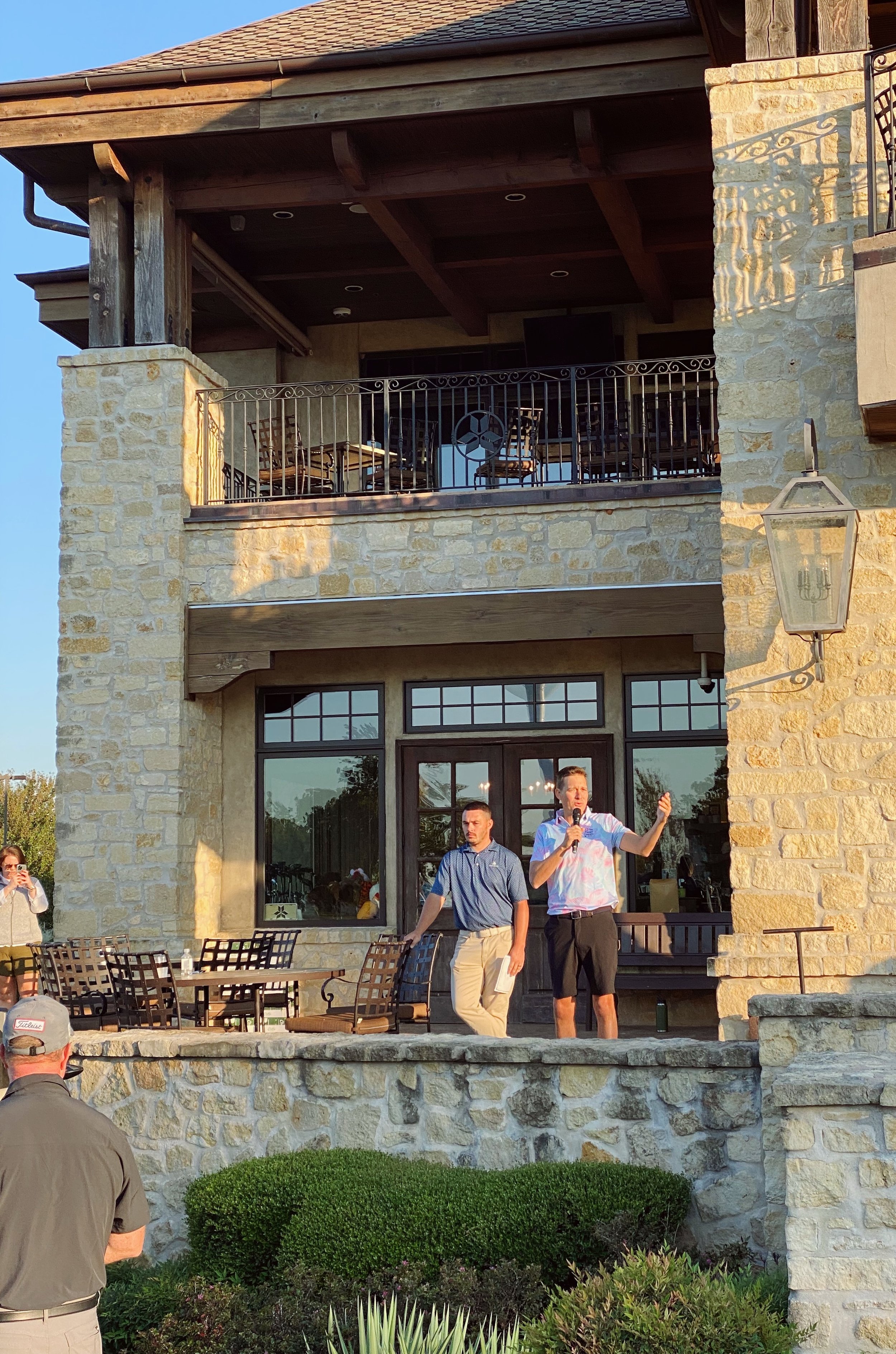
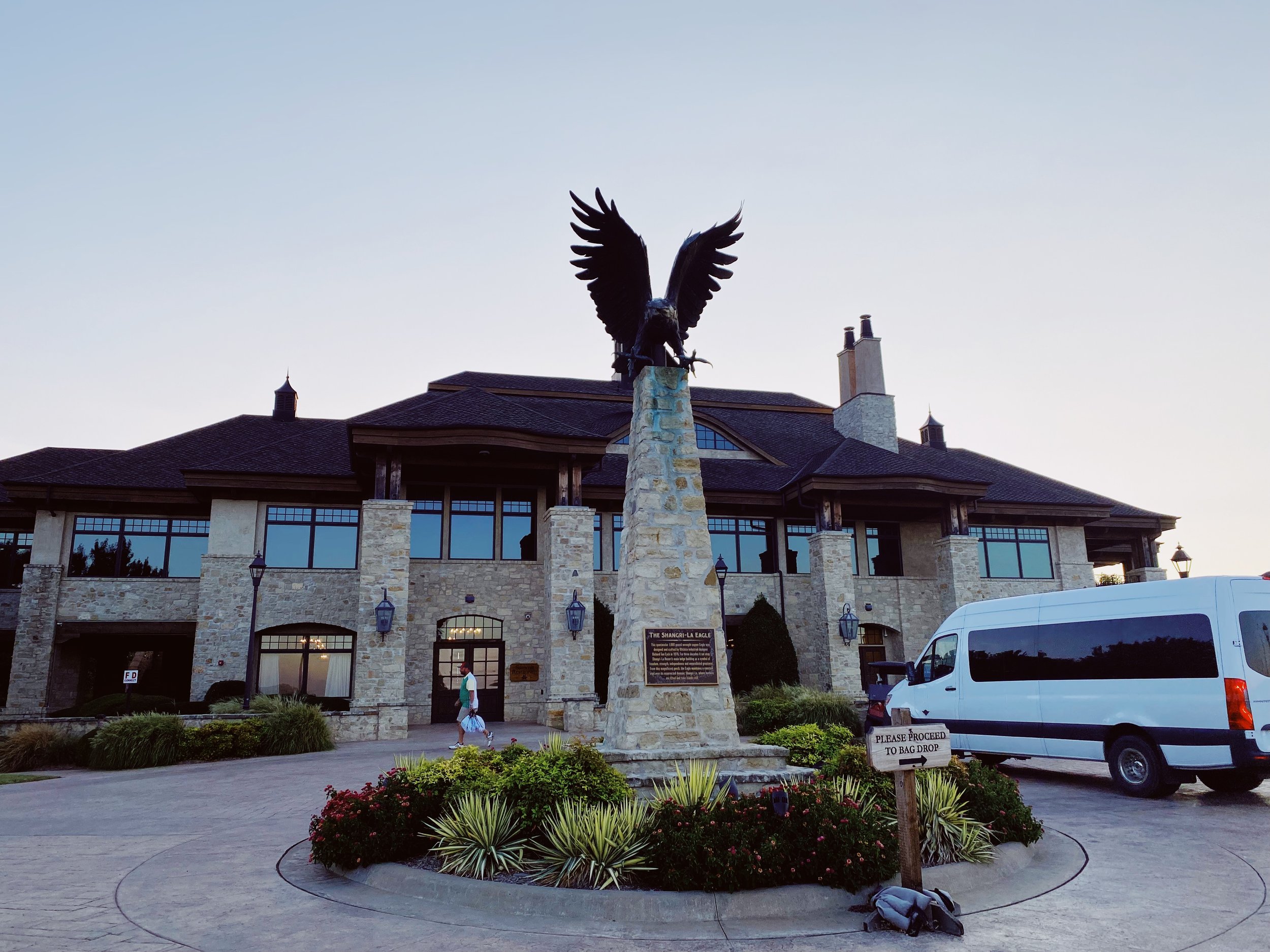

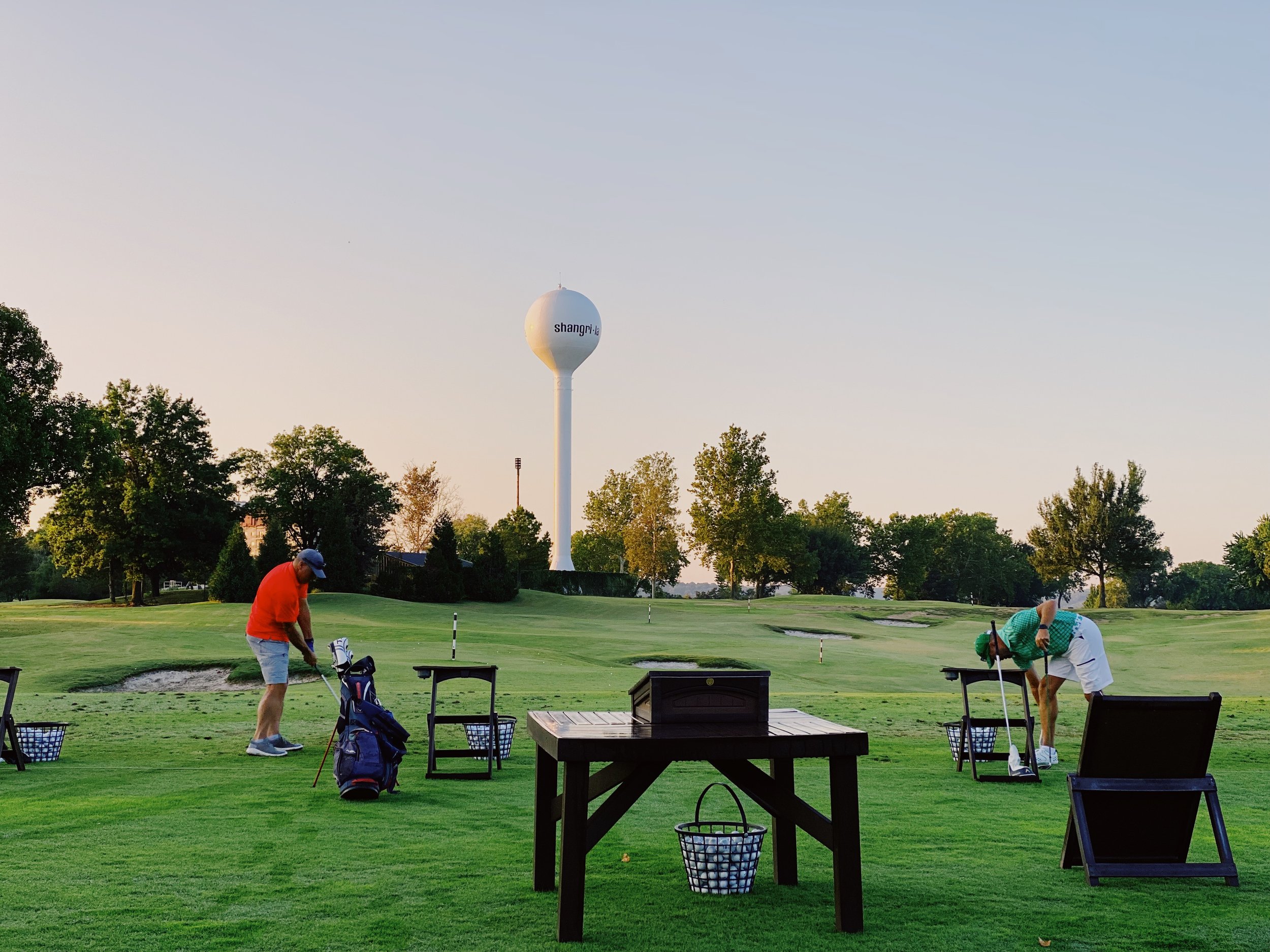
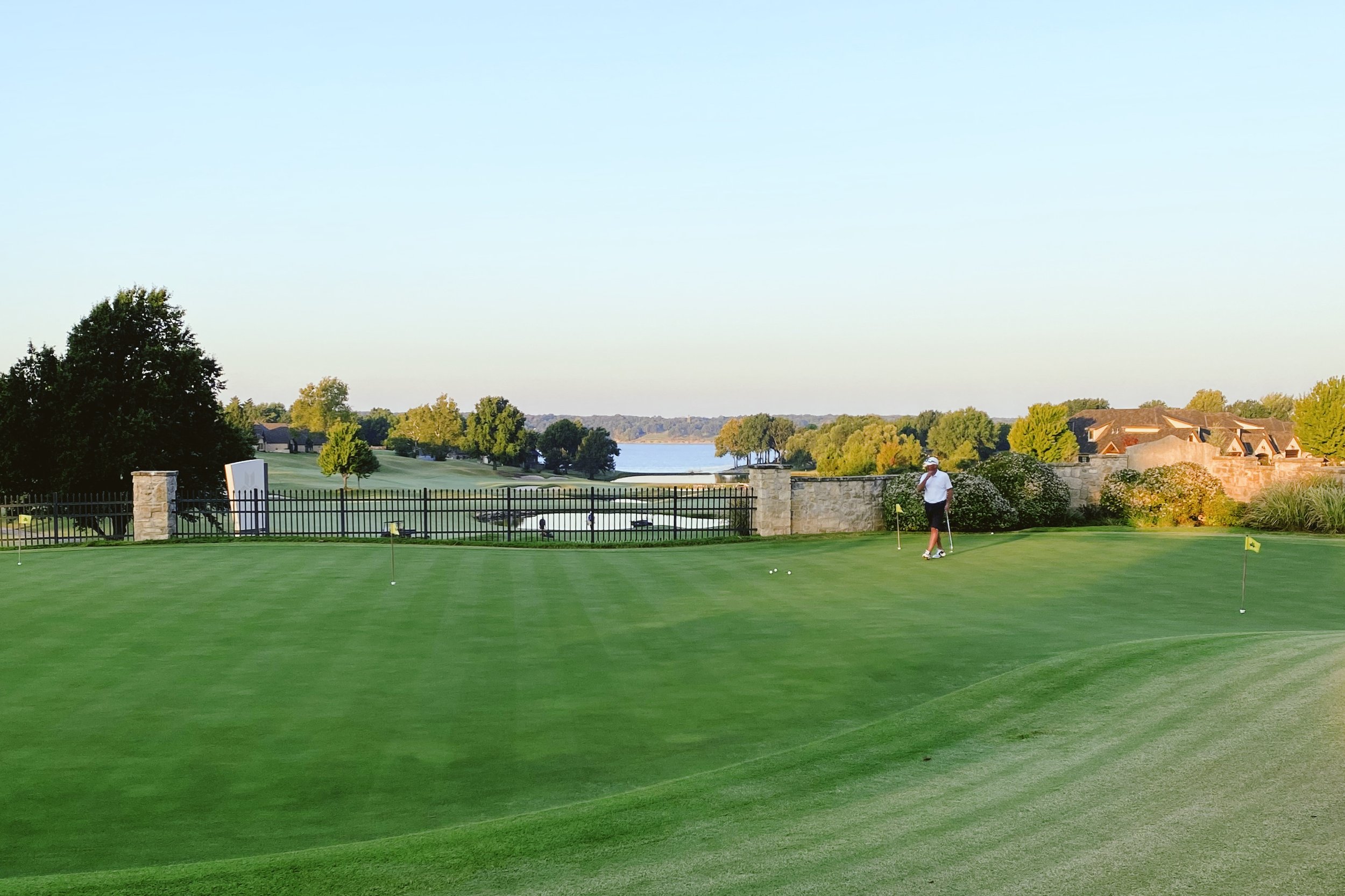
The resort has been a staple on Monkey Island for nearly 60 years. The original hotel was opened in May 1964 by Oklahoma City’s Frank Richards. Management changed hands multiple times before falling to Wichita native Charles Davis in 1969, who owned 1000 acres and ran Angus cattle on the island. For the next two decades, Davis transformed the sleepy fishing lodge into a world-class resort, earning sought-after accolades such as Mobil’s Four-Star designation and AAA’s Four Diamond Award.
The resort was billed as a “Mini-Hawaii” on the tip of Monkey Island. The Tahitian Terrace became known for its live music and free-flowing tropical libations. The cattle baron even built 36 holes of Championship golf on the island, attracting some of the area’s biggest golf enthusiasts. Hall of Fame New York Yankee Mickey Mantle frequented the resort in his retirement years, hosting the “Mickey Mantle Celebrity Golf Classic” there from 1991-1994 to benefit the Oklahoma Make-A-Wish foundation. The attendee list for these events read like a “Who’s Who” of influential people in American sports and culture - Bob Knight, Stan Musial, Yogi Berra, Bob Costas, Neil Armstrong, Willie Nelson, Bill Murray, Warren Spahn, Allie Reynolds, Steve Owens, George Frazier and Eddie Sutton.
A newspaper advertisement for Shangri-La in 1975.
The ties between Shangri-La and Oklahoma’s political landscape run deep. In 1977, the resort hosted the Midwestern Governors’ Conference. Oklahoma Lt. Gov. George Nigh acted as master of ceremonies for the three-day event, showcasing the resort and its various amenities. Following the event, journalist John Young stated, “The setting, on Grand Lake O’ The Cherokees, undoubtedly was a pleasant surprise to visitors unfamiliar with Oklahoma… It was surely a big plus for the state’s effort to upgrade its tourism industry.”
The positive reaction of the event lingered as five years later, Shangri-La was once again chosen to showcase itself on the national stage.
Nigh, now the Governor of the State of Oklahoma, convinced the National Governors’ Conference to hold their annual meetings at the resort in 1982. Davis pulled an additional $25 million in resources together to expand and improve facilities in advance of the event. Attendees included Pierre S. du Pont IV of Delaware, Bill Clements of Texas and John D. Rockefeller IV of West Virginia. In all, 41 governors from around the United States attended the conference on Monkey Island.
If the National Governors’ Conference of 1982 was a high point for the resort, then the ensuing three decades were a roller coaster. Falling into bankruptcy in 1986, the property changed hands multiple times and much of its assets fell into disrepair. Shangri-La became merely a distant memory to many who had once held her in such high regard.
Enter Eddie Gibbs.
In early 2010, the fence magnate purchased the property with one goal in mind – to create a world-class golf resort at Grand Lake. Within 15 months, Gibbs and his team had begun to revitalize the Championship Blue Course and built the towering 13,000-square-foot clubhouse. By the end of 2011, The Champions Nine was open for play. By the summer of 2013, Shangri-La boasted 27 holes of Championship golf.
“One of the reasons we champion the efforts at Shangri-La is Eddie Gibbs’ investment back into a gem of a property inside the state of Oklahoma,” Pinnell said. “We’re always trying to highlight entrepreneurs and developers who take a tourism attraction that may have been hot decades ago and revitalize them. If you build it; they will come. If you demand more than just being ‘OK’, then Oklahoma taxpayers will reward that effort.”
It's because of Gibbs’ efforts to revitalize a place that holds historic value to the state of Oklahoma that Pinnell is excited to host his golf tournament there each year.
“I hear stories of people who come to my tournament who haven’t been to Shangri-La in decades or have never even been to Grand Lake before. I love hearing that someone came to my tournament and then tell me that they brought their wife or their family out there the next weekend.”
Pinnell has served as Oklahoma’s lieutenant governor since 2019. But when asked about his day-to-day, you might be surprised by the answer.
“The lieutenant governor position is a blank slate – it’s kind of what you make it,” Pinnell says. “I ran on a platform of tourism four years ago and we won all 77 counties because of that.”
He compares his platform to that of Nigh, who in 1958 became the youngest lieutenant governor in state history at age 31. During his tenure, he was noted to be Oklahoma’s greatest cheerleader, pushing the state’s agenda of tourism. As a state legislator, he introduced a bill to make “Oklahoma!” the state song. He was also known to entice movie producers to film on location in Oklahoma. During his time in public office, Nigh saw films such as “Where the Red Fern Grows,” “Rumble Fish” and “The Outsiders” filmed in Oklahoma.
“He was – and still is – one of the best promoters and champions of our state,” Pinnell said. “And that shouldn’t be discounted. We need somebody in the Executive Branch who understands sales and marketing, because if we don’t define who we are as a state, then 49 other states will define it for us.”
That’s the main reason why Pinnell wanted so badly to hit the ground running. One of his first efforts as lieutenant governor was to establish a consistent brand for the state of Oklahoma. This project brought together some of Oklahoma’s brightest and forward-thinking minds in marketing, sales and communications to develop a visual and verbal identity that the state could utilize. The result can be found on welcome signs at every major highway that enters and exits Oklahoma, on agency websites and on buildings around the state.
“When we came in, we realized the wide perception from people outside our state is ‘Oklahoma is a flat dust bowl,’ and nothing could be further from the truth. But most people didn’t know that because we weren’t promoting a positive, diverse brand. So we got 200 Oklahomans together for a volunteer-led effort to identify that brand.”
On the heels of the new brand came none other than a worldwide pandemic. For Pinnell, he saw a tremendous opportunity. His team launched #OKHereWeGo, a digital campaign designed to market Oklahoma’s outdoor assets, from hiking and camping to fishing and – of course – golf.
“That gave us an opportunity to show people what was 30 minutes outside their door,” Pinnell said. “From golf courses to state park trails, a lot of people were looking for things to do. Out of a crisis, sometimes there are positives, and I think one of those was Oklahomans got outside again.”
#OKHereWeGo was a campaign designed to get people to enjoy outdoor activities like golf, fishing, hiking and more.
From the initial push to get people outside, now Pinnell and his team are implementing opportunities to sustain that momentum. One of those ways is through the newly formed Oklahoma Golf Trail.
With newly passed legislation widely supported on both sides of the aisle as well as Pinnell’s office, a commission will designate a list of golf courses around the state that will be highlighted on the official Oklahoma Golf Trail, something that he is excited to market in the future.
Pinnell is not lost on the rich golf heritage that Oklahoma boasts. From the highest concentration of Perry Maxwell golf courses in America to the slew of major championships Oklahoma has hosted, he understands the unique opportunity we have to market the game of golf.
“Tourism is the front door to economic development,” Pinnell said. “Whether it’s a major championship or the college softball World Series, every event we can host will draw people to our state. What I know for a fact is that Oklahoma sells very well when we can actually get people to the state.”
“That’s what was so powerful about the PGA Championship,” he continues. “It’s on TV every day, so millions of people are seeing that Oklahoma is in fact not a dust bowl and actually a beautiful place, but the tens of thousands of people who visited Tulsa for the first time – I’d bet you anything that most of those people will be back because they saw a really cool city.”
The full result of Pinnell’s efforts remain to be seen; he’s hoping for another term to continue building on that momentum. But he’s also acutely aware of the public/private partnerships that are necessary to sustain that growth.
“The state government can only do so much,” Pinnell said. “A city can only do so much. You see these golf courses or any sort of city- or state-operated recreation, you really do need private partners in that effort. I am much more sensitive to seeing and recognizing those private and corporate efforts. Having a corporate partnership could mean the difference in keeping a golf course open or not.”
I have to leave the tournament early, so I’m not around to see Pinnell’s team finish in the middle of the pack. I did, however, get the chance to tour Gibbs’ latest effort at Shangri-La, “The Battlefield” – an 18-hole Par Three course that will offer dramatic green complexes and approach shots ranging from less than 80 yards to nearly 250 yards. It’s a project that superintendent Justin May is eager to see completed.
“I really think this will be a game-changer for golf tourism in northeast Oklahoma,” May told me as he drove me around the new track.
Driving off the island and back into reality, I reminisce back to the previous night’s luau, when I pulled Pinnell aside to thank him for the invitation. The sun had set and we were watching resort guests play pickleball at The Racquet Club, another gem of Gibbs’ island playground.
I asked him about reelection – he’s on the November general election ballot - and what’s next for him as lieutenant governor.
“Wherever your focus is as an elected official is where you’ll see movement,” Pinnell answered. “We didn’t have a standalone Secretary of Tourism before I asked for it. If you think about that, we didn’t have someone in the Executive Branch who every single day was trying to promote the state. I can’t say what other elected officials would or wouldn’t do to draw continued interest to our state. But I can tell you for a fact that right now, Oklahoma has a lieutenant governor who is passionate about our efforts in golf and outdoor recreation, and I’m going to try and leverage that passion into creating more revenue for our state.”
Whatever his future holds, I’m comforted to know that this mid-handicapper will continue to be an advocate for the game of golf in Oklahoma.
